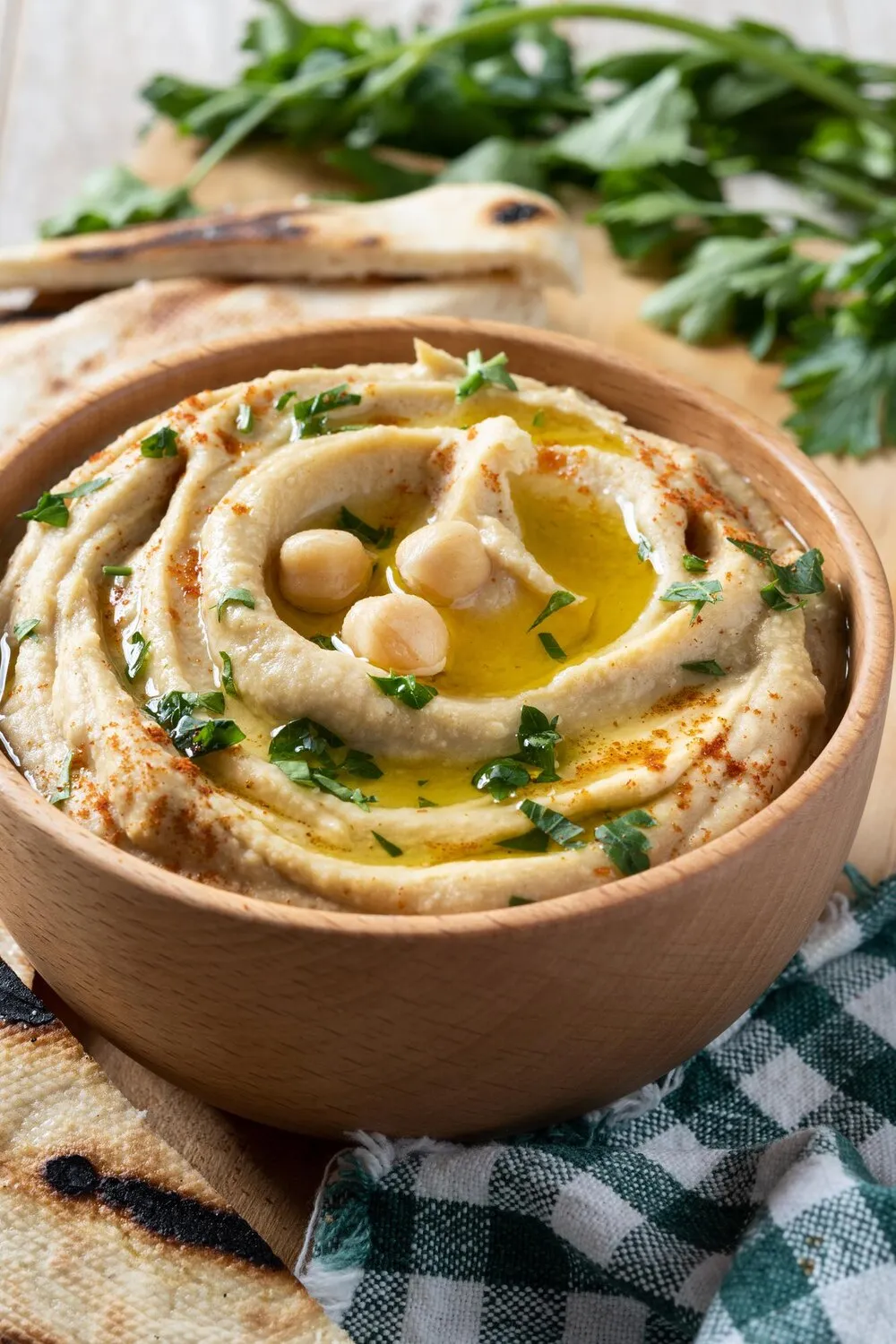
Hummus Classic
Classic hummus served with pita bread.
Nutrition Facts
* The % Daily Value (DV) tells you how much a nutrient in a serving of food contributes to a daily diet. 2,000 calories a day is used for general nutrition advice.
The exact origins of hummus are debated, but evidence suggests it originated in the Levant region (modern-day Lebanon, Israel, Palestine, Syria, and Jordan) as early as the 13th century. The earliest known recipes similar to hummus appear in medieval Arabic cookbooks. Chickpeas, tahini, lemon, and garlic have been staples in the region for centuries.
Hummus is a staple food in the Middle East and has deep cultural significance. It's more than just a dip; it's a symbol of hospitality, community, and shared meals.
Communal Eating
Hummus is typically served in a large bowl and shared amongst family and friends. This communal eating experience fosters a sense of togetherness and connection.
Hospitality
Offering hummus to guests is a sign of generosity and hospitality in Middle Eastern cultures. It's often served as part of a mezze platter, a selection of small dishes designed for sharing.
Everyday Food
Hummus is a common everyday food, enjoyed for breakfast, lunch, or dinner. It's a versatile dish that can be paired with a variety of foods, from pita bread and vegetables to falafel and meat.
Hummus is characterized by its earthy, nutty, and tangy flavors. The combination of chickpeas, tahini, lemon juice, and garlic creates a balanced and savory experience.
The dominant flavor comes from the chickpeas, providing an earthy and slightly sweet base. Tahini, made from ground sesame seeds, adds a creamy, nutty richness and a slightly bitter undertone. Lemon juice contributes acidity and brightness, cutting through the richness of the tahini. Garlic provides a pungent and savory element that complements the other ingredients. The addition of olive oil drizzled on top enhances the overall flavor and provides a smooth texture. Salt is used to balance and enhance all the flavors.
Peel the Chickpeas
Peeling the chickpeas, while time-consuming, results in a smoother and creamier hummus texture. It's worth the effort for a truly exceptional result.
Use Ice Water
Adding ice water while blending helps to create a light and airy texture. The cold temperature prevents the tahini from seizing up and allows for a smoother emulsification.
Quality Tahini Matters
The quality of the tahini significantly impacts the final flavor of the hummus. Opt for a high-quality tahini made from roasted sesame seeds for a richer and more complex flavor.
Fresh Lemon Juice is Key
Avoid bottled lemon juice and use freshly squeezed lemon juice for a brighter and more vibrant flavor.
Explore additional Hummus dishes and restaurants
Explore HummusDiscover top dining spots and culinary experiences in Amsterdam.
Explore AmsterdamLearn more about the food culture, restaurant scene, and culinary heritage of Netherlands.
Explore Netherlands